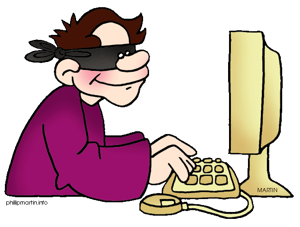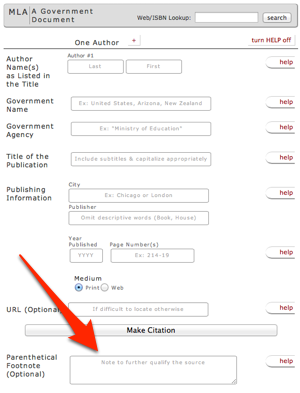As a matter of disclosure, Ethan Warlick, whose comment I am responding to here, is my nephew. He will be graduating from the University of North Carolina in Wilmington next month and moving on to the real world of work and learning by joining a social media startup. I’m not sure if this is why I’ve elevated my response to full blog-status, or because of the story he tells, that..
..one of my roommates recently received a failing grade on a paper for “plagiarism.” Whether it was or wasn’t, he says he “missed a quotation mark,” I think that it will be interesting to learn new ways to deal with plagiarism from the summit! Especially from a collegiate perspective, as I hear about issues on campus constantly.

I scanned through a number of definitions of plagiarism from a number of sources and the most inclusive one came from Wiktionary, “The act of plagiarizing: the copying of another person’s ideas, text or other creative work, and presenting it as one’s own, especially without permission.”(Plagiarism, 2013)
There seem to be three parts here, or three questions. Did he copy the work of another person? Did he present the work as his own? ..and Did he get permission to use the work? Considering these three questions, I would have to read the offending paper to determine if he committed plagiarism. But in my own work, attributing the expressed ideas of another person is more than just punctuation.
When I write (or draw, paint, compose, etc.) something, I am presenting it as my work — a representation of my ideas. When the expressed ideas of another adds value to my work, and I include the expression of those ideas, then it is my responsibility to credit the creator of that expression; and that is not simply a matter of punctuation.
Quotation marks simply, “..set off and represent exact language (either spoken or written) that has come from somebody else.” (“Purdue online writing“) They indicate ownership, but they do not attribute the owner. To avoid plagiarism, I must identify the creator and do so in a way that the reader will not fail to recognize the information’s source and the roll that it plays within my work. That credit best falls within the text along with some form of assistance to the reader who wants to validate its accuracy, reliability and validity. If Ethan’s roommate credited the work with a phrase such as, “John Battelle recently said in a lecture..” or “Berkman Center fellow, David Weinberger wrote in …” Well, the writer isn’t presenting the work as his own, and is not plagiarizing.
So, if the roommate was simply careless in his punctuation, then was the failing grade fair? From a student’s point of view — that is to say, academically — then perhaps it was not fair. However, from a learner’s point of view, especially if the learner is preparing himself for endeavors that will rely on written communication, then I might consider it a fair, if not authentic, response.
When we finish school and begin to work (and continue to learn), we can still fail by leaving out a quotation mark. A potential client, customer, or employer can, and often does decide to choose another provider because it appears that I have used the words of another as my own. In my opinion, the concept of intellectual property should be an integral part of our basic notions of literacy — receiving, perhaps, even more attention than it already does.
But that said, I’ll let you in on a little secret; something that my teachers never shared. In the world, after formal schooling, we almost never do anything, that’s important, alone. It was one of my surprises when I left the solitude of classroom teaching to work more directly with other educators (district office). Those other professional educators were constantly asking me and each other to read their writing before they sent it; and I adopted the habit myself, when what I needed to say was important. Almost every day Brenda and I ask each other to read our emails before we hit the send button, and we usually catch each other’s careless mistakes. When the conveyance of an idea is important, then it takes more than one head to effectively construct its expression.
This leads me to wonder, are your school writings important enough that instructors encourage you to read each other’s work? ..or are they just grammar?
Plagiarism. In (2013). Wiktionary. Wikimedia. Retrieved from http://en.wiktionary.org/wiki/plagiarism
Purdue online writing lab: How to use quotation marks. (n.d.). Retrieved from http://owl.english.purdue.edu/owl/resource/577/01/
Clipart, curtesy of http://internet.phillipmartin.info



 When I started teaching myself to program computers, I had to have a book. Radio Shack had a great book that came with their TRS-80 micro-computers (they were called micro-computers back then). It was simple, well sequenced and funny. Apple IIes came with a book, but not so good. Learning PHP and MySQL also required books –– really thick ones.
When I started teaching myself to program computers, I had to have a book. Radio Shack had a great book that came with their TRS-80 micro-computers (they were called micro-computers back then). It was simple, well sequenced and funny. Apple IIes came with a book, but not so good. Learning PHP and MySQL also required books –– really thick ones.


 I’ve been working hard, over the past few months, working on Citation Machine. I hope that the changes haven’t been too obvious. The most striking changes have involved the operation of the help (<- help) buttons to the right of most form elements. You must now clicking them and when clicked, the fold-down messages should run much more smoothly. I’ve taking the mouse-over functions out, because I’m sure that the jumpiness caused pop-up messages reacting to mere mouse-overs was irritating. It irritated me.
I’ve been working hard, over the past few months, working on Citation Machine. I hope that the changes haven’t been too obvious. The most striking changes have involved the operation of the help (<- help) buttons to the right of most form elements. You must now clicking them and when clicked, the fold-down messages should run much more smoothly. I’ve taking the mouse-over functions out, because I’m sure that the jumpiness caused pop-up messages reacting to mere mouse-overs was irritating. It irritated me.
